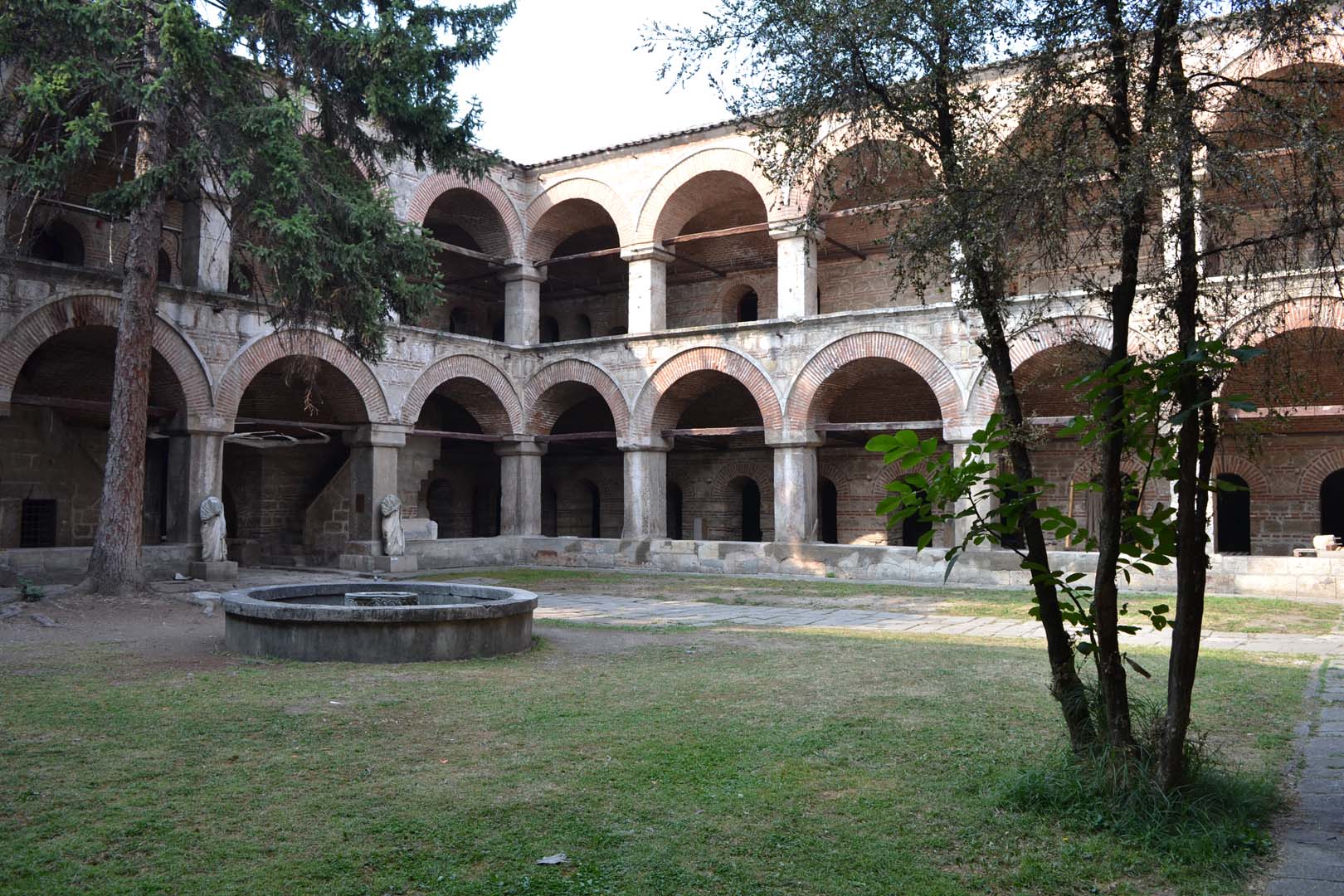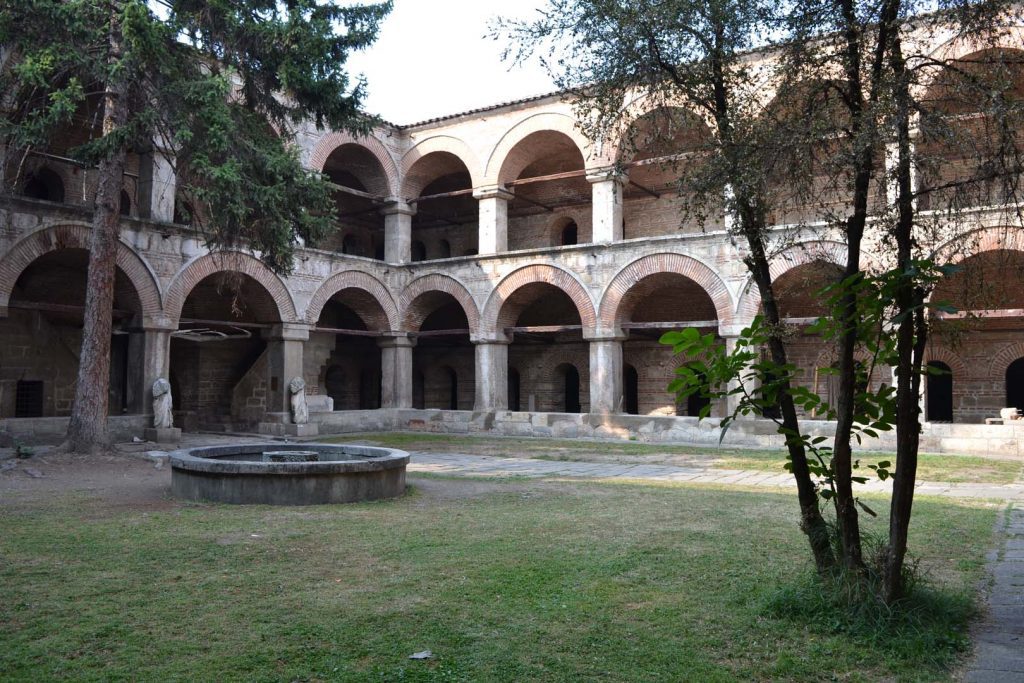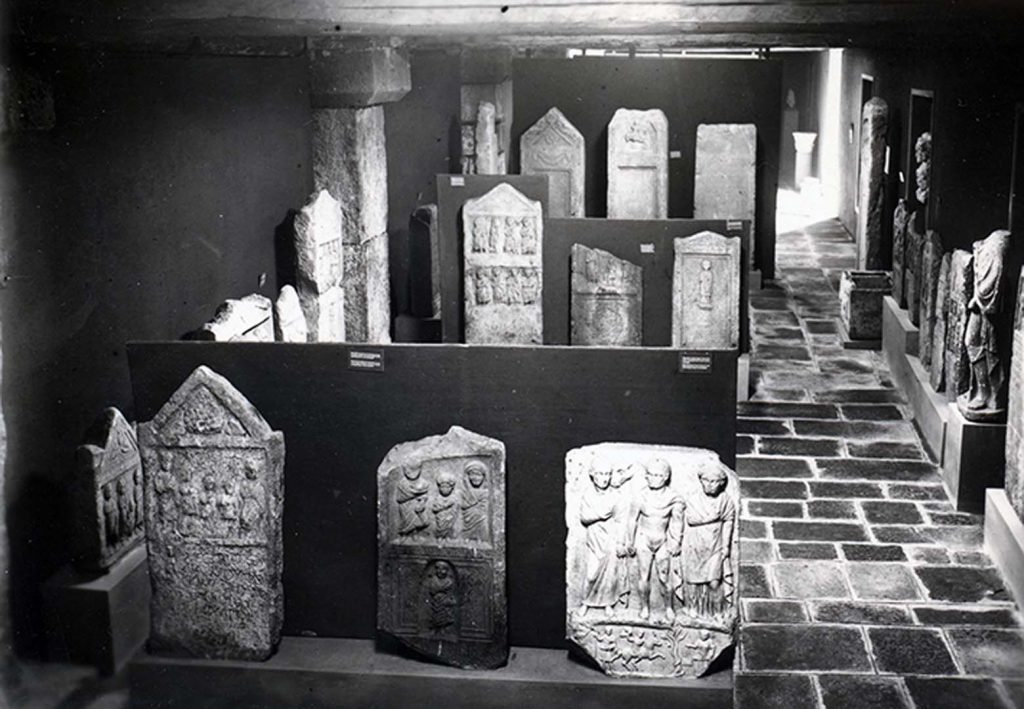
The story of the stone monuments set in Kurshumli An – from 1924 until today
This story begins with few enthusiastic scientists, members of the Skopje Scientific Society, that began collecting ancient inscriptions in the Hellenic and Latin language, stone sculptures and reliefs, as well as parts of architectural elements in Kurshumli An in Skopje. This way they created the collection of stone monuments, which became the initial collection of the Museum of the Vardar Banovina, formed on April 1st, 1924, thus establishing the foundation of the museum activity in Republic of North Macedonia.
According to the documentation of the Archaeological Museum, the collection of the monuments was intensified during the period of 1926 – 1934, period in which Dr. Nikola Vulikj, Dr. Miodrag Kokjich, Dr.Miodrag Grbikj and Dr.Radoslav Grujikj, conducted surveys on the territory of Macedonia and all of the accidental finds, including those from the most remote villages, as well as the finds from the archaeological excavations, were collected and documented in Kurshumli an.
In the ’30s of the 20th century the monuments were exhibited in the yard of the building and were presented to the visitors. Although the museum functioned under different names due to the historical events, as Museum of Southern Serbia, and then as National Museum, the care in collecting the textual and pictorial records continued. Shortly after Second World War World War II, the archaeologist and classical philologist Dr.Walter Wrede was staying and working as a prisoner in Kurshumli An.
With the establishment of the Archaeological Museum of Macedonia in 1949, the collection of stone monuments was documented, processed, studied and enriched by Borka Dragojevikj – Josifovska.
Under the leadership of Dushanka Vuchkovich – Todorovikj in 1953, the Archaeological Museum conducts excavations in the village Chepigovo, in the ancient Stibera.
With the discovery of the Gymnasium and the Temple of the goddess Tyche as a legate of Antistia Fuska, the collection of stone monuments was significantly enriched, primarily because they are rare monuments found in situ and also because they enrich the history of the city that was previously known to us from inscriptions and statues, which were brought in Kurshumli An as chance discoveries. All of them constitute a highly desired collection in the lapidariums around the world.
In 1955 the first permanent exhibition of stone monuments was opened, placed in the stable in Kurshumli An, adapted for those needs, whose author is Borka Josifovska. The old stable was divided into several sections according to the typology of the private stone monuments, inscriptions and reliefs and there were also special compartments for the most important archaeological sites in the Republic of North Macedonia – Scupi, Stobi, Stybera and Heraclea Lyncestis. The exhibition was accompanied with an exceedingly well-written guide, which even nowadays is equally interesting to different reader profiles.
Kurshumli An was seriously damaged in the earthquake in 1963, then restored and reconstructed, but the stable, i.e. the lapidarium remained in bad condition. During that time the Archaeological Museum in Kurshumli An housed and preserved the biggest lapidarium in the Balkan and the increase of the collection of stone monuments continued by means of gathering objects through the archaeological excavations and surveys conducted by Apostol Keramidchiev, Dr.Viktorija Sokolovska and Dr.Eleonora Petrova.
With the opening of the permanent exhibition of the Archaeological Museum in 1982, the stone monuments got their place in the display of the periods to which they belong, in the departments of pre-Roman, Roman and Medieval periods.
In 2001, on the ground floor of the main building of Kurshumli An a lapidarium was opened, whose author is Dr.Slavica Babamova. In the yard and in the cells on the ground floor of the building around 140 exhibits in stone were placed, which is a significant number in the museum presentation of this field. The exhibition had chronological order representing the individual micro-regions and ancient cities in Macedonia.
With the relocation of the Archaeological Museum in the new building on the left bank of the river Vardar in 2014, the stone monuments from Kurshumli An, as well as the most significant museum objects from the other museums in the Republic of North Macedonia became part of the lapidarium of the Archaeological Museum of Republic of North Macedonia.
During 2017 and 2018 in the back yard of the stable in Kurshumli An, as a part of the Archaeological Museum, a relocation of the stone monuments is underway. The museum objects and materials collected in the an for almost a century are selected according to museum collections, recording and documentation is carried out anew, determination of their physical condition and the need for further conservation and restoration is assessed.
The ultimate goal of this multi-year project is to set up the new lapidarium in the stable in Kurshumli An, which after many years will display the stone monuments in front the expert and wider public.




